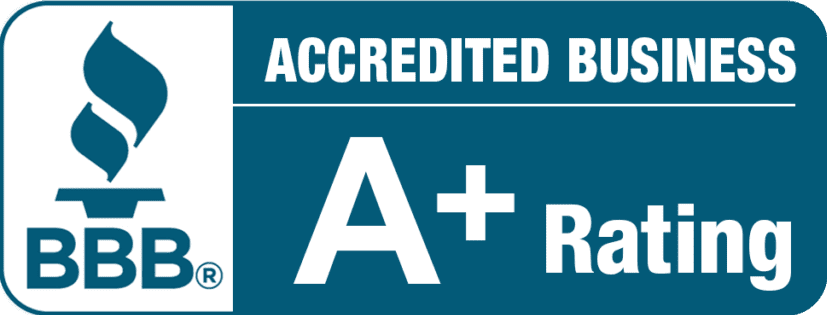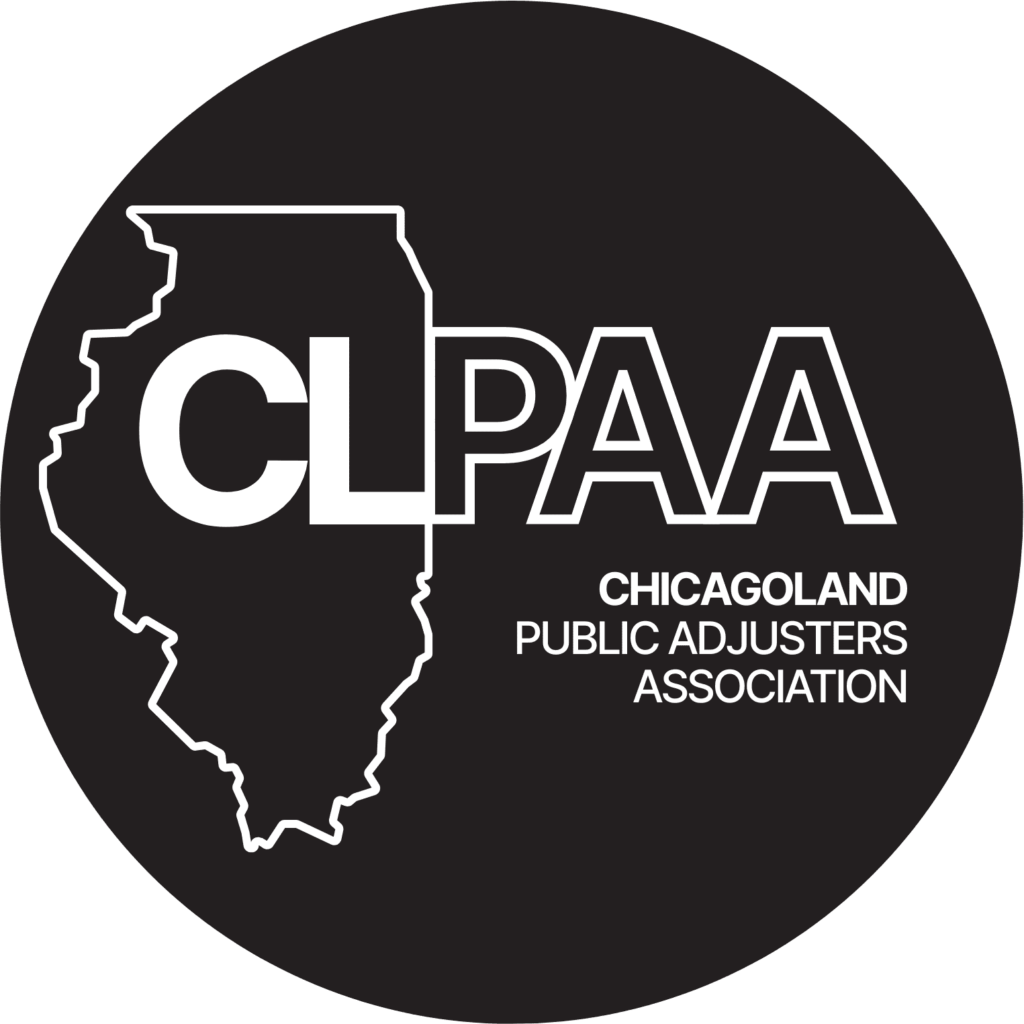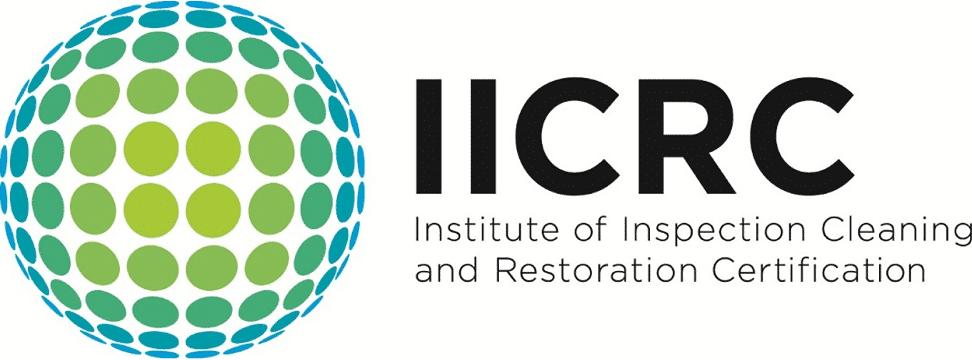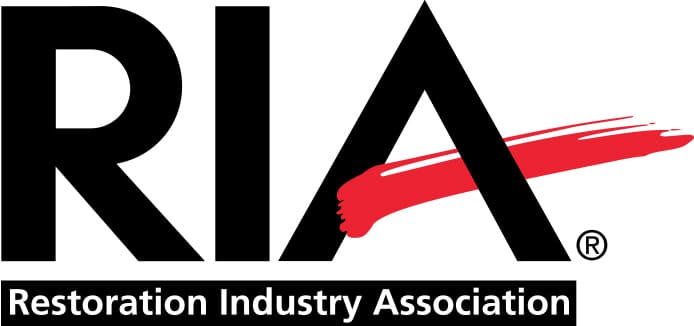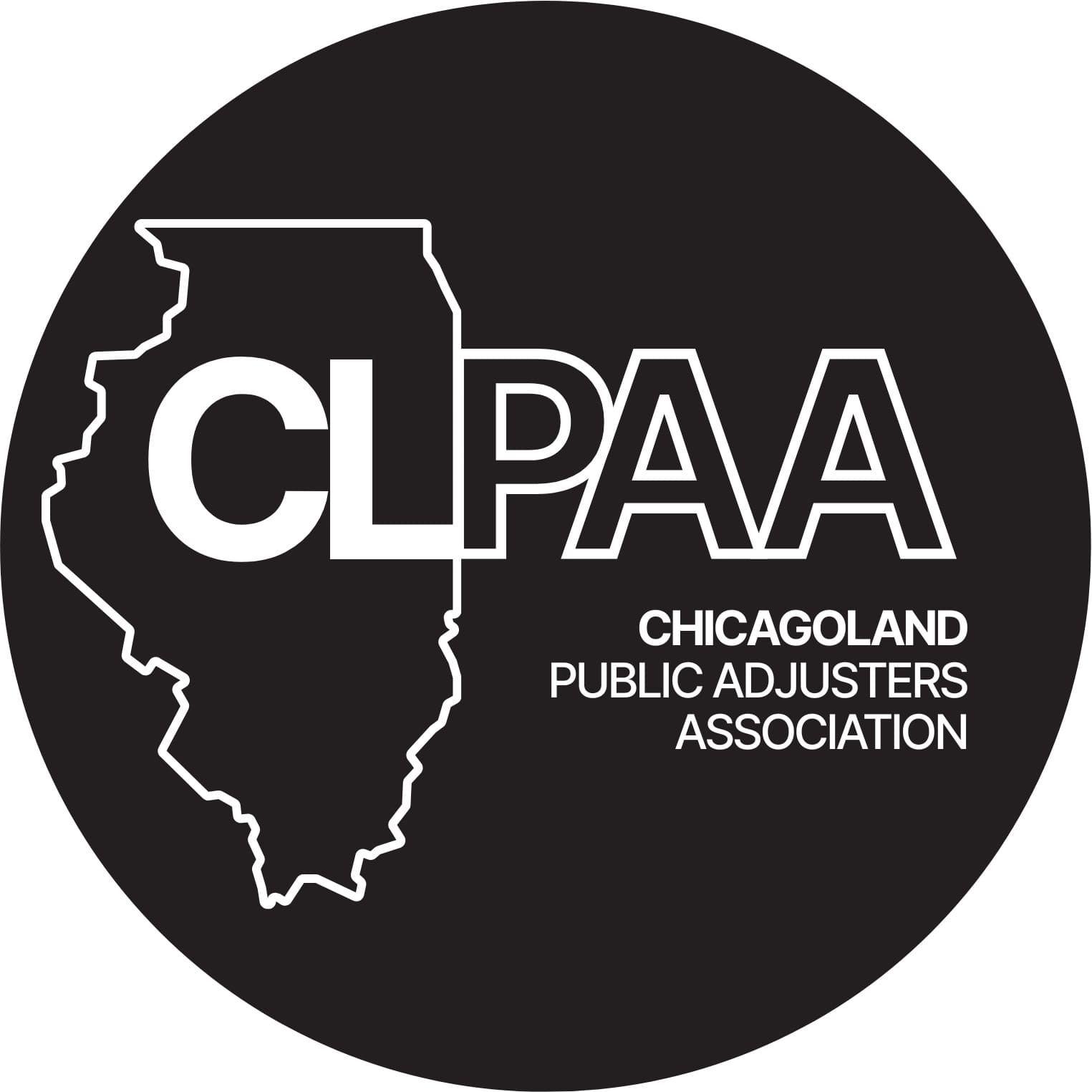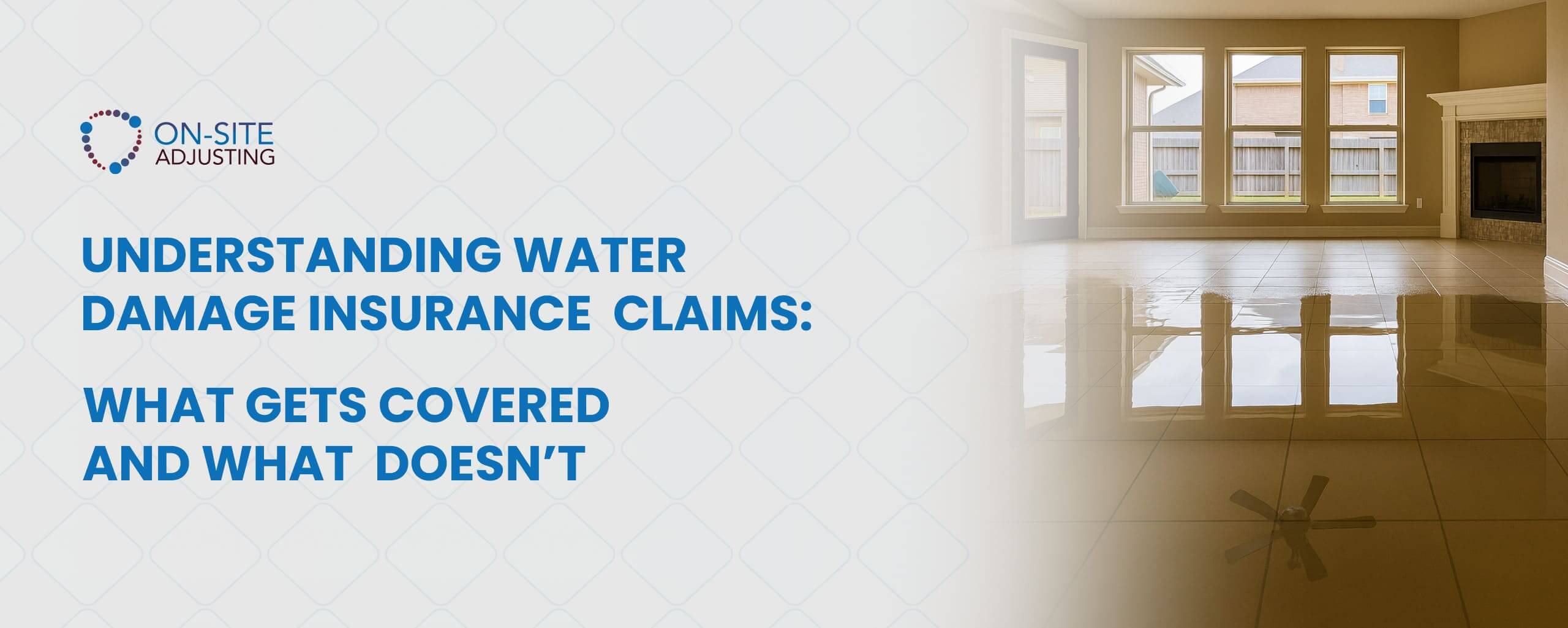
Water damage is one of the most common — and frustrating — types of insurance claims for homeowners. What makes it even more confusing is that not all water damage is treated the same by insurance companies. The source of the water, how the damage occurred, and the language in your insurance policy all play a major role in whether or not your claim will be paid.
If you’re dealing with water damage, it’s critical to understand what your policy actually covers — and to get a professional, like a public adjuster from On Site Adjusting, to review it.
Here’s what you need to know.
Common Types of Water Damage Claims
Water damage can come from all kinds of sources, including:
- Burst pipes due to freezing temperatures
- Pipe bursts not related to weather
- Malfunctioning plumbing fixtures (like toilets or faucets)
- Flooding (outside water entering the home)
- Sewer backups
- Overflow of water (bathtubs, sinks, toilets)
- Clogged drain lines
- Appliance malfunctions (dishwashers, water heaters, washing machines)
- Sump pump failure
Each of these water loss types may be treated differently depending on your policy. That’s why a blanket “yes” or “no” on water damage coverage isn’t possible — you need to read the fine print or have someone like On Site Adjusting do it for you.
Feeling stuck with your claim? You don’t have to fight alone.
Reach out to us — we will review your claim for free and help you understand your options
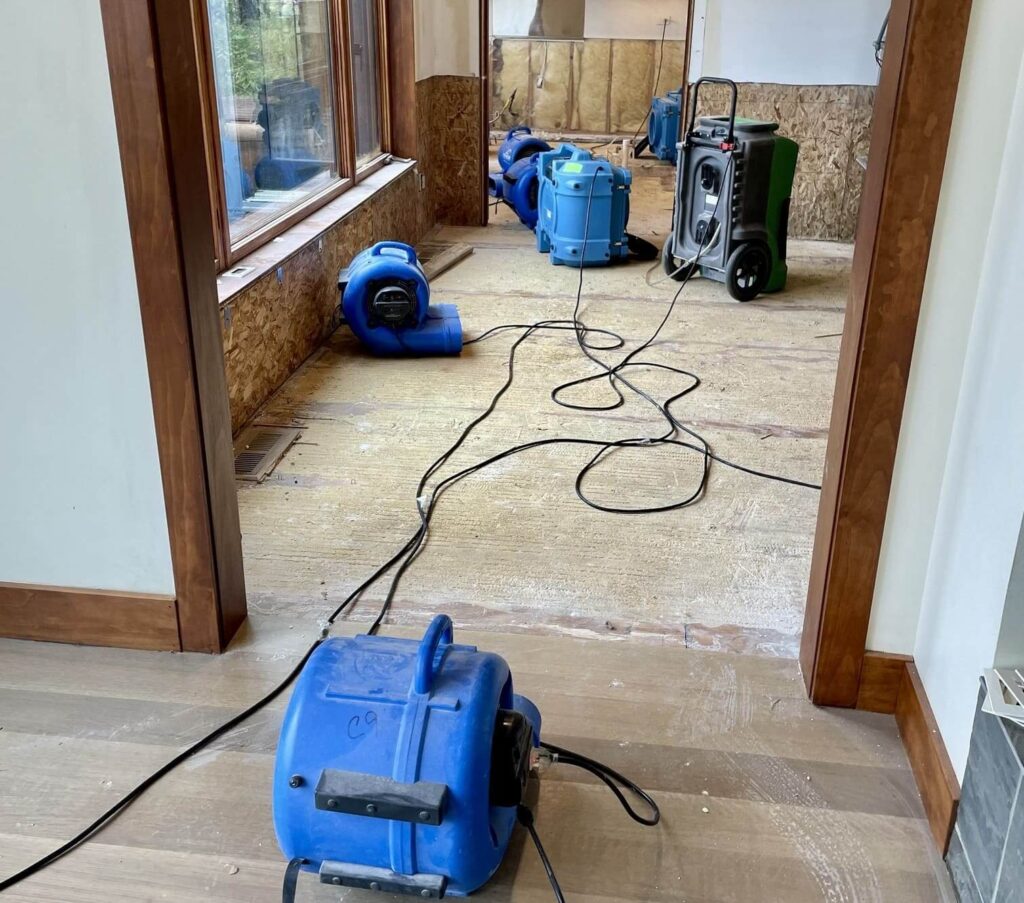
When Water Damage Might Not Be Covered
A lot of water damage claims are denied for reasons most homeowners don’t expect. Some of the most common reasons include:
- Wear and tear: Gradual damage over time usually isn’t covered.
- Neglect or lack of maintenance: If the insurance company believes you should’ve noticed or fixed a problem earlier, they may deny the claim.
- Ongoing leaks: Especially if they were visible or obvious.
- Sewer backups and sump pump failures: Often only covered up to a set limit, usually around $10,000.
- Flooding (from outside water): This is typically not covered under standard homeowners policies — you’d need separate flood insurance for that.
However, even if something seems excluded, there are gray areas. For example, if a hidden leak occurs under the foundation or behind walls, and the homeowner had no way of knowing it was there, coverage may still apply.
Why Documentation Is Key
One of the best ways to get a claim paid is by proving the cause of the water loss. That’s where licensed professionals come in.
For example:
- If a clogged drain line caused a backup, a licensed plumber should inspect it. If the blockage was caused by something like baby wipes, and not tree roots or mud, the claim may be covered at 100%.
- If a pipe burst due to freezing, a plumber documenting that the thermostat malfunctioned, causing interior temperatures to drop, could be the difference between a paid or denied claim.
Insurance companies rely heavily on professional reports. Having a licensed plumber and a public adjuster involved early gives your claim the best shot at success.
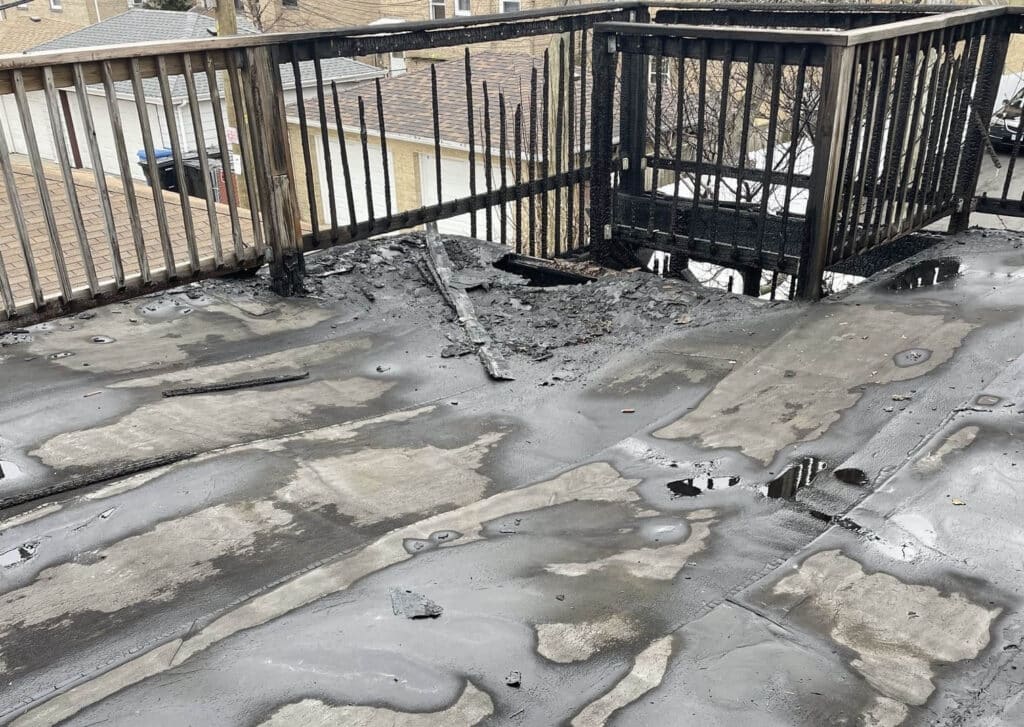
Don’t Navigate It Alone — Bring in a Public Adjuster
The biggest mistake homeowners make is trying to handle water damage claims on their own. Insurance policies are packed with exclusions, caps, and technical language that can easily be misunderstood. Working with a public adjuster from On Site Adjusting ensures someone is on your side who understands how to interpret policy language, gather the right documentation, and push back when needed.
We’ll also make sure:
- You’re claiming the right type of water loss
- All damaged areas are included in the scope
- Your claim is submitted with the correct cause-of-loss documentation
- Policy limits and exclusions are clearly understood and addressed
Final Thought
Water damage might seem straightforward, but insurance claims rarely are. Whether it’s a burst pipe or a backed-up drain, the way the loss is reported and documented can make or break your claim.
Don’t go it alone. Call a licensed plumber right away, and then reach out to a professional public adjuster like On Site Adjusting. We’ll review your policy, document your damages, and fight to make sure your claim gets paid — so you’re not left footing the bill for something your insurance should cover.
